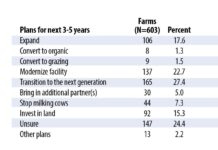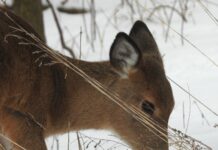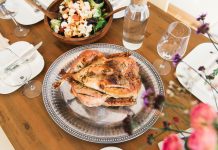Bobwhite quail, once a popular game bird in Ohio, have been relatively nonexistent in the state since the late 1970s. Before that, it was common to hear the telltale call of a bobwhite quail on rural outings and to scatter a covey of the little brown rockets while rabbit hunting. Today, the simple, two note call and the very sight of a quail are rarities at best.
Some observers claim that the Arctic-like blizzards of the late 1970s that closed schools for weeks at a time, all but doomed the little birds. And that is a possibility since at the time, Ohio farmers left little cover where wildlife could find shelter and food.
That’s been over 30 years ago and bobwhite quail have never recovered. But there is a glimmer of hope, according Ohio State University.
Mark Wiley, a master’s degree student, is helping put bobwhite quail in the spotlight, hoping the bright light might generate enough interest in bringing Ohio’s quail back to a degree of health and sustainability.
Bobwhite fell by a devastating three-quarters in the 20 years between 1984 and 2004, a dismal crash that illustrates the trouble quail are in.
Building habitat
Wiley and other researchers point to a number of causes, including urban sprawl, cold winters, and a lack of cover. Wiley is concentrating on habitat, the key factor for survival for not only quail, but many other bird and small animal species.
Interestingly, Wiley’s findings and strategies are doable. Woodlot and other non-productive areas might be the key, if managed correctly with wildlife in mind.
Wiley says that agriculture and bobwhite quail can co-exist. Hopefully, people will want to participate in the recovery of these colorful wild birds.
Bobwhite quail are just one of many sub-species of quail but the only one native to Ohio. The call of a bobwhite quail, just two notes in length, sounds just like the word “bobwhite.”
Bobwhite quail are favored game birds in the southern states where some traditional hunts include horseback or buggy rides as wide-ranging pointing dogs search the plantation fields for birds. Once flushed and scattered, the quail are hunted bird by bird. Most private land coveys are managed by killing only a few birds each season.
* * *
Shifting to fish
The National Fish Hatchery system has been around for a long time and its worth is evident and can be counted in millions of fish produced, research accomplished, and marine life impacted. The system consists of 71 hatcheries scattered around the country, each with a story to tell and a history of its own.
From its beginnings some 141 years ago, the hatchery system has done much more than its stated job.
Currently, national hatcheries can be credited with making a huge impact on many fronts. For every federal dollar spent on national hatcheries, there are $28 generated benefiting the economy.
The system of 71 facilities combined can boast the creation 13.5 million angling days, $550 million in retail sales, $903 million in industrial output, and 8,000 jobs.
Now crunch these numbers: $256 million in wages, $37 million in federal tax revenue, and $35 million in local tax revenue.













We had bobwhites and pheasants on our farm growing up. We have about double the cover now than there was in the ’70’s and we haven’t seen either in years. We now have a growing population of coyotes which we did not have back then, the more the coyote population grows the lower the ground dwelling fowl population gets.
We have a farm in southern ohio that once had quail now that most of the farming has ceased it is over grown thus providing excellent cover for quail! Is there a place in Ohio that I can purchase chicks in a cooperative agreement with Ohio stat or the department of agriculture ? I am a retired OSU graduate!